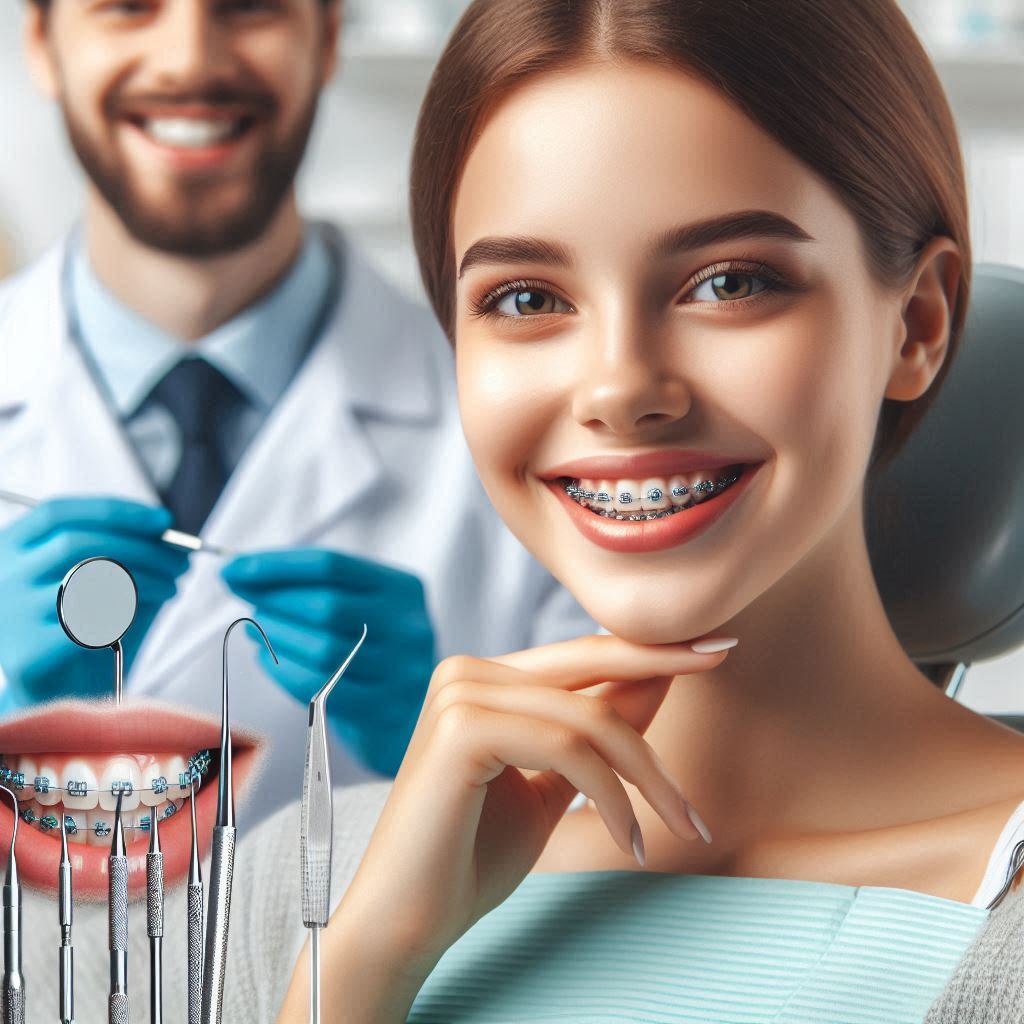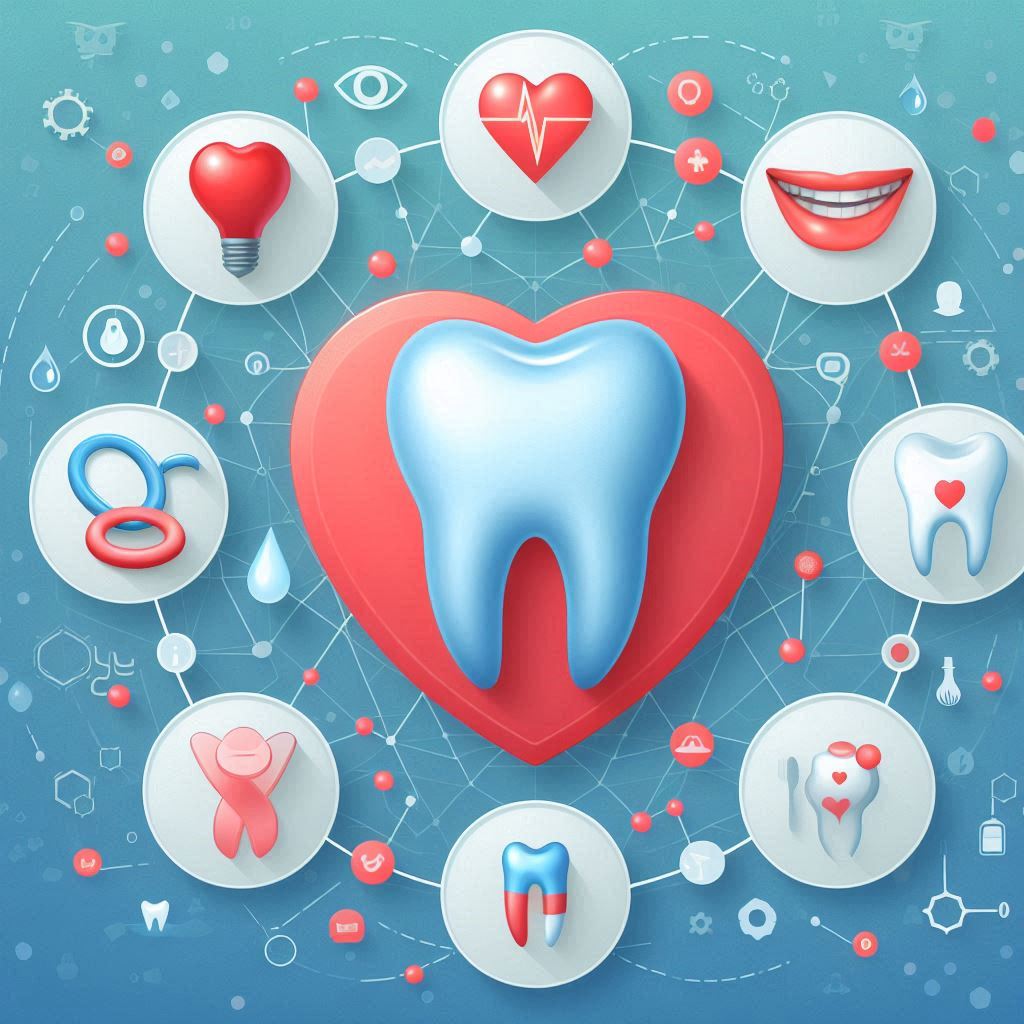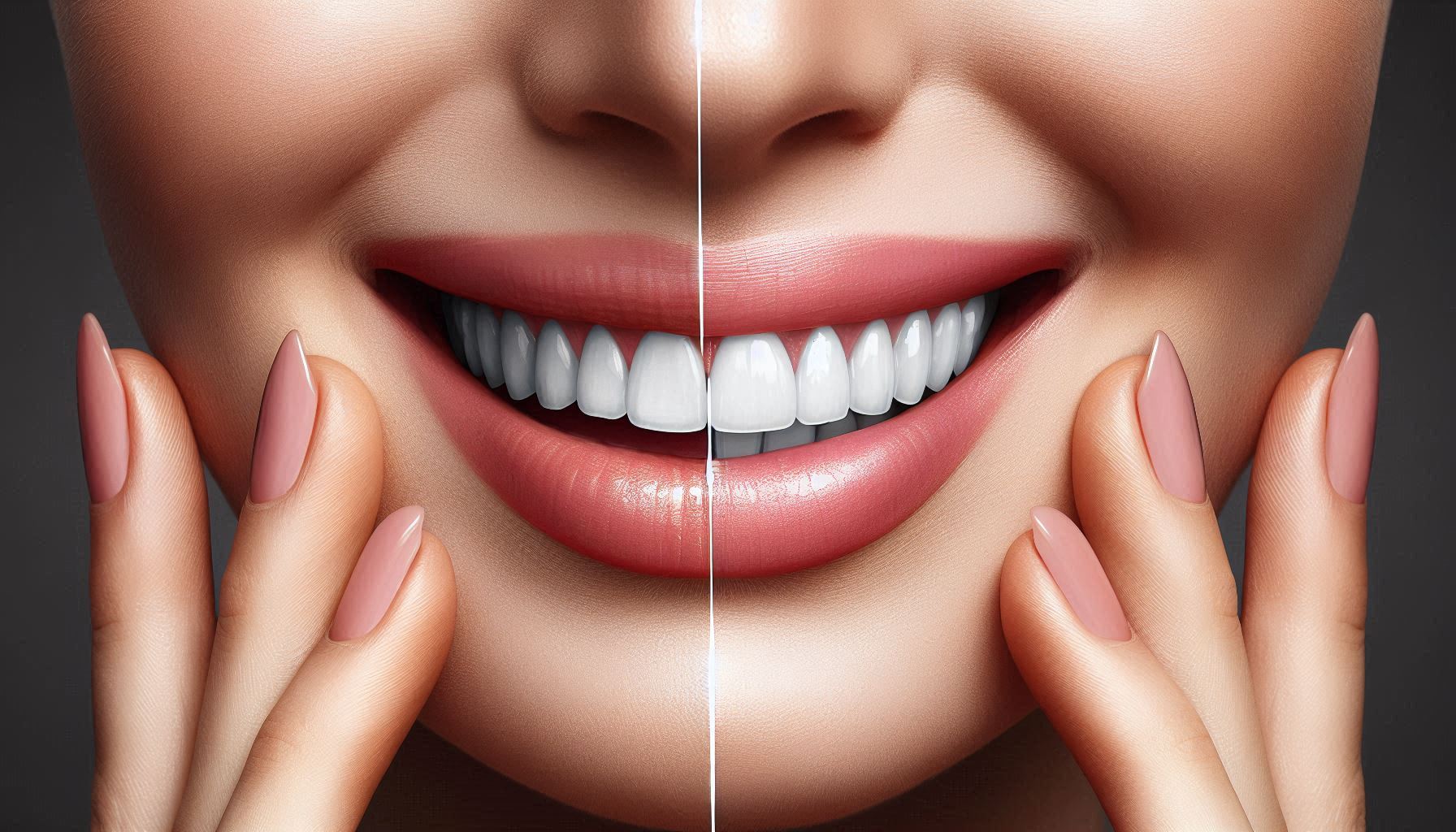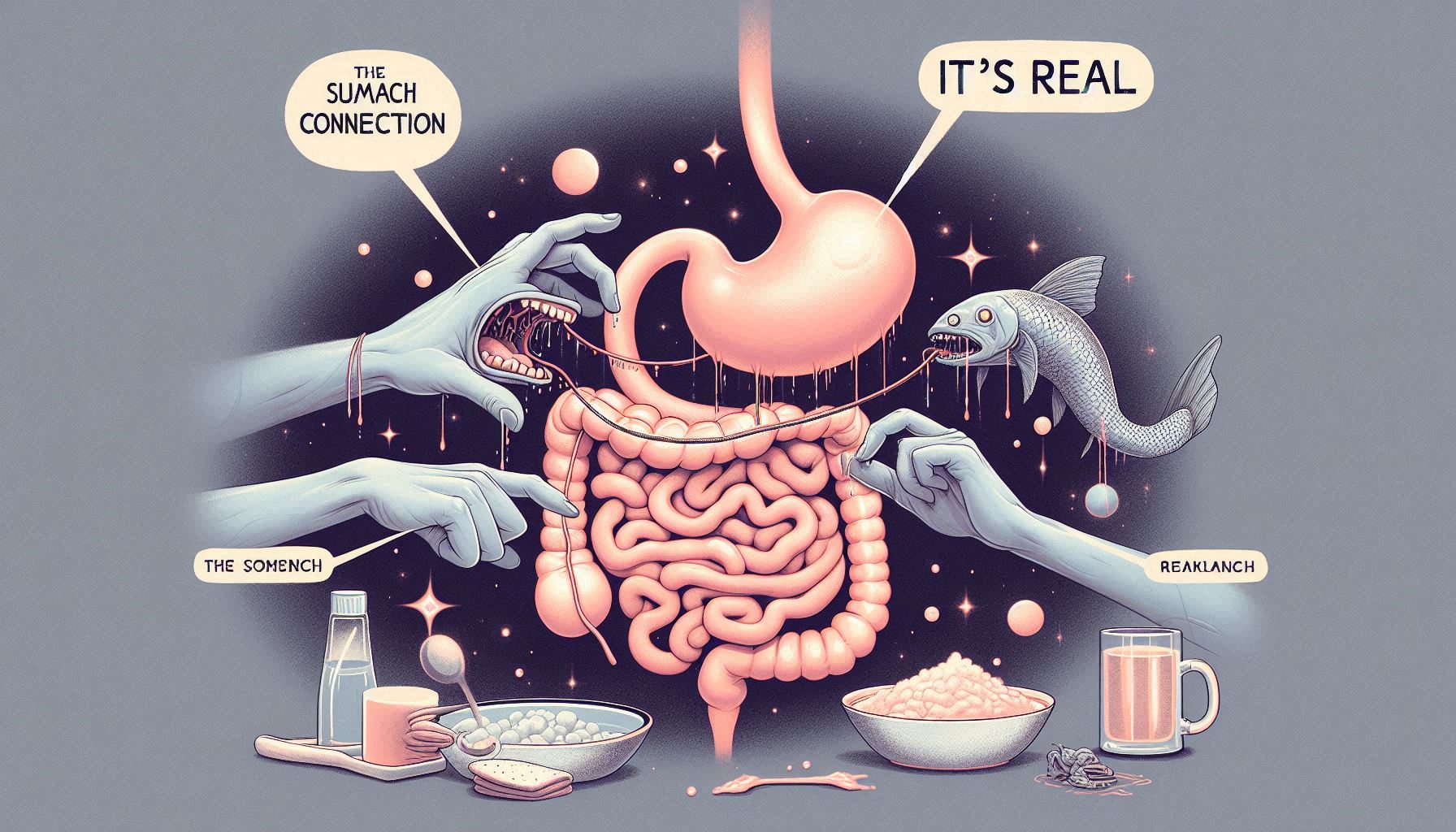Introduction
Orthodontics is a specialized field of dentistry focused on diagnosing, preventing, and correcting misaligned teeth and jaws. One of the most common orthodontic treatments is the use of braces, which work by gradually shifting teeth into better alignment. This process not only improves the appearance of a person’s smile but also contributes to better oral health by enhancing bite function, making cleaning easier, and preventing potential dental issues.
What Are Braces?
Braces are orthodontic devices that consist of several components: brackets, archwires, and elastics. The brackets are attached to the teeth, the archwire connects them, and the elastics are used to adjust the position of teeth and the jaw. Braces can be made from different materials such as metal, ceramic, or clear plastic, depending on the patient’s preferences and the severity of their dental needs.
Types of Braces:
- Metal Braces: These are the traditional and most commonly used type. They are made of high-grade stainless steel and are known for their durability and effectiveness.
- Ceramic Braces: Made of clear or tooth-colored material, these braces are less noticeable than metal braces but may be slightly more fragile.
- Lingual Braces: These braces are attached to the back of the teeth, making them invisible from the outside.
- Clear Aligners (Invisalign): These are clear plastic trays that gradually shift teeth into position. They are removable and are often chosen for aesthetic reasons.
How Do Braces Work?
Braces work by applying continuous pressure to teeth, gradually moving them into a more ideal position over time. The process is both gradual and dynamic, requiring adjustments to the braces at regular intervals.
- Brackets: Small metal or ceramic devices are bonded to the front of the teeth. The brackets act as anchors for the archwire and apply pressure to guide the movement of the teeth.
- Archwire: The archwire is a thin metal wire that runs through the brackets and connects them. The archwire is adjusted regularly to apply the right amount of pressure to the teeth, guiding them into alignment.
- Elastics and Rubber Bands: These components are used to adjust the alignment of the jaw and teeth. They apply targeted pressure to move specific teeth or adjust the bite.
- Adjustments: The orthodontist will make adjustments to the archwire and elastics at regular appointments, typically every 4-6 weeks. These adjustments are crucial to ensure that the braces are working correctly and that the teeth continue to move toward the desired position.
The Science Behind Teeth Movement
The movement of teeth is based on the principle of bone remodeling. When pressure is applied to a tooth, the bone surrounding the root begins to break down in the direction of the force. This allows the tooth to move. At the same time, new bone forms on the opposite side of the tooth, filling in the space left by the shifting tooth.
Key Concepts in Teeth Movement:
- Tension and Compression: The two main forces involved in teeth movement are tension and compression. Tension occurs on the side of the tooth where it is moving, causing bone resorption (the process of bone breakdown). Compression occurs on the opposite side of the tooth, where the bone is being formed to support the new position of the tooth.
- Bone Remodeling: The process of bone remodeling is slow, which is why braces require time (typically 18-24 months) to achieve the desired results.
Why Do People Need Braces?
There are several reasons why individuals may require braces. Some of the most common include:
- Crooked or Crowded Teeth: When teeth overlap or are too close together, it can be difficult to clean between them, leading to oral health problems like cavities and gum disease.
- Overbite/Underbite: An overbite occurs when the upper teeth protrude too far over the lower teeth, while an underbite occurs when the lower teeth are too far forward. Both conditions can affect bite function and facial appearance.
- Crossbite: This occurs when some of the upper teeth bite inside the lower teeth, which can cause wear on the teeth and lead to jaw issues.
- Spacing Issues: Some people have large gaps between their teeth, which can affect the alignment of the bite.
- Jaw Alignment Problems: In some cases, the jaw itself may be misaligned, requiring orthodontic intervention to correct the issue.
What to Expect During Orthodontic Treatment
- Initial Consultation: During the initial visit, the orthodontist will examine your teeth, take X-rays, and discuss treatment options with you. This is when the best type of braces for your situation will be recommended.
- Getting the Braces On: The process of putting on braces typically takes 1-2 hours. The orthodontist will attach the brackets to the teeth using a special adhesive, and the archwire will be threaded through the brackets.
- Adjustments: After the braces are in place, regular check-ups are necessary to monitor progress and make adjustments. These visits are typically short and involve tightening the archwire or changing elastics.
- Duration of Treatment: The length of time you’ll need to wear braces depends on the severity of the problem. For most people, the treatment lasts between 18-24 months, but it can vary.
- Retainers: After the braces are removed, retainers are used to ensure that the teeth stay in their new positions. Retainers are typically worn for several months or years, depending on the orthodontist’s recommendation.
Benefits of Braces
Braces offer numerous benefits, both cosmetic and functional. These include:
- Improved Appearance: Straightening crooked teeth or correcting bite issues leads to a more aesthetically pleasing smile, which can improve self-confidence.
- Better Oral Health: Straight teeth are easier to clean, reducing the risk of cavities, gum disease, and tooth decay.
- Improved Bite Function: Braces can correct bite problems, making it easier to chew and speak.
- Long-Term Results: Orthodontic treatment typically provides permanent results, especially when proper retention is maintained.
Risks and Considerations of Braces
While braces are effective for many people, there are some risks and considerations to keep in mind:
- Discomfort: After adjustments, it’s common to experience some discomfort as the teeth shift. Over-the-counter pain relievers can help alleviate this discomfort.
- Oral Hygiene Challenges: It’s important to brush and floss regularly while wearing braces, as food particles and plaque can build up around the brackets and wires, leading to tooth decay and gum disease.
- Treatment Duration: Some people may find the length of treatment to be challenging, especially if they have to wear braces for 2+ years.
The Cost of Braces
The cost of braces can vary based on factors such as the type of braces, the severity of the issue, and the location of the orthodontist. On average, traditional metal braces may cost between $3,000 and $7,000. Ceramic braces or Invisalign aligners may cost more. Many orthodontists offer payment plans, and some dental insurance plans may cover a portion of the cost.
Alternatives to Traditional Braces
While traditional metal braces are highly effective, there are alternatives available for individuals seeking less noticeable options. Some of these alternatives include:
- Invisalign: Clear aligners that gradually move teeth into position. These are removable and discreet but may not be suitable for severe cases.
- Self-Ligating Braces: These braces don’t require elastics, which can reduce the frequency of adjustments and provide a more comfortable experience.
- Clear Ceramic Braces: These are less visible than metal braces and can be a good choice for people looking for an aesthetic option.
Post-Treatment Care and Retention
After braces are removed, it’s essential to wear a retainer to prevent teeth from shifting back to their original position. Retainers can be fixed or removable, and the orthodontist will determine the best type based on the patient’s needs. The retention phase is critical for ensuring that the results of orthodontic treatment are long-lasting.
The Psychological Impact of Orthodontic Treatment
Orthodontic treatment, while focused on improving dental health and appearance, can also have profound psychological effects. People, especially children and teenagers, often experience a significant boost in self-esteem and confidence once their treatment is completed. A straight smile is often associated with attractiveness, and for many, this cosmetic change can alter how they feel about themselves.
- Improved Confidence: As individuals move through the stages of treatment, they often report increased confidence. A straighter smile can lead to positive changes in social interactions, public speaking, and personal relationships.
- Teens and Social Influence: Adolescents, in particular, are very aware of their appearance. Having braces at this stage can sometimes be stressful due to peer pressure and teasing. However, as orthodontics have advanced, with options like clear aligners and less noticeable braces, this concern has significantly reduced.
- Adults and Treatment Motivation: For adults considering braces, the decision is often tied to the desire to feel better about their appearance. Some adults might have had braces as teenagers but may have experienced teeth shifting over time. Others are simply seeking to correct long-standing bite problems or tooth misalignment. The desire for a confident smile as an adult has seen more and more adults opting for treatment, often choosing less visible options such as clear aligners or ceramic braces.
Understanding the Different Stages of Orthodontic Treatment
The journey to a straighter smile is a multi-step process that varies depending on the complexity of the case, the type of braces, and the individual’s oral health. However, there are several general stages that most people will go through.
Initial Consultation and Diagnosis:
- Comprehensive Exam: The orthodontist will examine the patient’s teeth, gums, jaw, and facial structure. X-rays, digital scans, or impressions may be taken to assess the alignment and bite.
- Treatment Plan: Based on the findings, a personalized treatment plan is developed, which includes the type of braces, the expected duration, and the cost of treatment.
Braces Placement:
- Bonding the Brackets: Once the braces and wires are ready, the brackets are securely bonded to each tooth. The orthodontist will attach them to each tooth’s surface using a dental adhesive.
- Fitting the Archwire: The archwire is threaded through the brackets and adjusted to apply gentle pressure to the teeth, pushing them into better alignment.
Adjustments and Progress:
- Regular Visits: Over time, the archwire may be replaced or tightened to increase the pressure applied to the teeth. These visits usually occur every 4-6 weeks. During this period, the orthodontist will check how the teeth are responding and may adjust the braces.
- Monitoring Progress: The orthodontist will monitor how the teeth are moving and will make necessary adjustments. Some patients may require additional components like rubber bands, headgear, or springs to help with the movement.
Final Stages of Treatment:
- Completion of Treatment: Once the desired alignment has been achieved, the braces are removed. The orthodontist will clean the teeth to ensure there are no adhesives left behind.
- Retainers: After the braces are removed, retainers are necessary to keep the teeth in their new positions. Initially, retainers may be worn full-time and then transitioned to part-time wear as long as recommended.
Post-Braces Care and the Role of Retainers
After completing orthodontic treatment and removing the braces, it is crucial to follow post-treatment instructions to ensure the longevity of the results.
Why Are Retainers Important?
- Preventing Teeth from Shifting: Teeth tend to shift back to their original positions without the support of a retainer. Wearing retainers ensures that the teeth maintain their new alignment and that the jaw adapts to the changes.
- Types of Retainers: There are two primary types of retainers:
- Fixed Retainers: These are bonded to the back of the teeth (usually the lower front teeth) and remain in place indefinitely.
- Removable Retainers: These are clear, plastic devices that are worn at night or as directed by the orthodontist.
- Compliance is Key: It’s important for the patient to follow the orthodontist’s instructions carefully. Wearing the retainer as recommended ensures that the teeth remain stable, and the treatment results are long-lasting.
Post-Treatment Adjustments and Follow-Ups:
- Routine Checkups: Even after the braces are removed and retainers are worn, the patient should schedule regular checkups with the orthodontist to monitor the position of the teeth. Occasionally, a new retainer might be required, especially if teeth show signs of shifting.
Potential Complications During Orthodontic Treatment
Though braces are highly effective, there are a few potential complications that can arise during treatment. These are generally rare but worth noting.
Discomfort and Pain:
- Initial Pain: It is common to feel some discomfort, especially in the first few days after getting braces or following an adjustment. The pressure exerted by the braces on the teeth can cause soreness, which usually subsides after a few days.
- Mouth Sores: The brackets and wires may irritate the inside of the mouth, causing sores or ulcers. Using orthodontic wax on the brackets can help prevent this.
- Pain Management: Over-the-counter pain medications such as ibuprofen or acetaminophen can help manage any discomfort during this time.
Loose Brackets or Wires:
- Occasional Breakage: It’s possible for a bracket or wire to become loose during treatment. This can occur if a patient eats hard or sticky foods or experiences trauma to the mouth. If this happens, it’s important to contact the orthodontist for repair.
- Keeping Braces Clean: Braces can trap food and plaque, making it important to maintain excellent oral hygiene throughout the treatment. Failure to clean braces properly can lead to issues such as cavities or gum disease.
Treatment Delays:
- Compliance Issues: If the patient doesn’t follow instructions regarding wearing rubber bands, retainers, or avoiding certain foods, it may cause delays in the treatment. This can prolong the time spent in braces.
The Importance of Oral Hygiene During Braces Treatment
Maintaining good oral hygiene during orthodontic treatment is critical. Braces create additional surfaces where plaque and food particles can accumulate. If these particles aren’t cleaned properly, they can lead to:
- Cavities: Food trapped in the braces can create an ideal environment for bacteria to grow, increasing the risk of cavities.
- Gum Disease: Braces can irritate the gums, and poor cleaning around the brackets can cause inflammation and gingivitis.
- White Spots: Failure to clean braces properly can result in demineralization of the tooth enamel, leading to white spots on the teeth after braces are removed.
Tips for Oral Hygiene with Braces:
- Brush After Every Meal: Use a soft-bristled toothbrush to clean your teeth and braces after eating to prevent food buildup.
- Use Floss Threaders: Flossing with braces can be tricky, but floss threaders or orthodontic floss can help clean between the brackets and under the archwire.
- Mouthwash: Use an antibacterial mouthwash to help reduce plaque and maintain fresh breath.
Conclusion
Braces have come a long way over the years, evolving into various types that suit different aesthetic preferences and orthodontic needs. Whether you choose traditional metal braces, clear aligners, or ceramic braces, the goal is the same: to improve your smile and dental health. The journey through orthodontic treatment requires patience and commitment, but the results are often life-changing.
A straight smile not only improves appearance but also offers functional benefits, such as better bite alignment, reduced risk of tooth decay, and enhanced oral health. By understanding how braces work, what to expect during treatment, and the long-term benefits, you are better equipped to make an informed decision about whether orthodontic treatment is right for you. Regardless of age, achieving a healthy, aligned smile can provide both aesthetic and psychological rewards that last a lifetime.
SOURCES
American Association of Orthodontists. (2022). What are braces? Retrieved from https://www.aaoinfo.org/
Brogdon, B. G., & Wilton, W. W. (2019). Orthodontic treatment and management. Elsevier.
Graber, L. W., Vanarsdall, R. L., & Vig, K. W. (2016). Orthodontics: Current principles and techniques (5th ed.). Elsevier.
Jain, R., & Pandya, H. (2017). A review on orthodontic appliances and their variations. International Journal of Current Research and Review, 9(16), 36-41.
Kharbanda, O. P., & Maheshwari, S. (2020). Orthodontics: Principles and practice (3rd ed.). Wolters Kluwer.
O’Toole, R. V., & Carr, R. H. (2018). The role of orthodontics in modern dentistry. Journal of Clinical Orthodontics, 52(8), 460-468.
Tsioumas, P. (2018). Advances in orthodontics: Innovations and techniques. Dental Clinics of North America, 62(1), 103-118.
Winter, R. (2017). Orthodontics in contemporary dentistry. Journal of Orthodontic Treatment, 29(3), 210-215.
HISTORY
Current Version
February, 10, 2025
Written By
SUMMIYAH MAHMOOD




